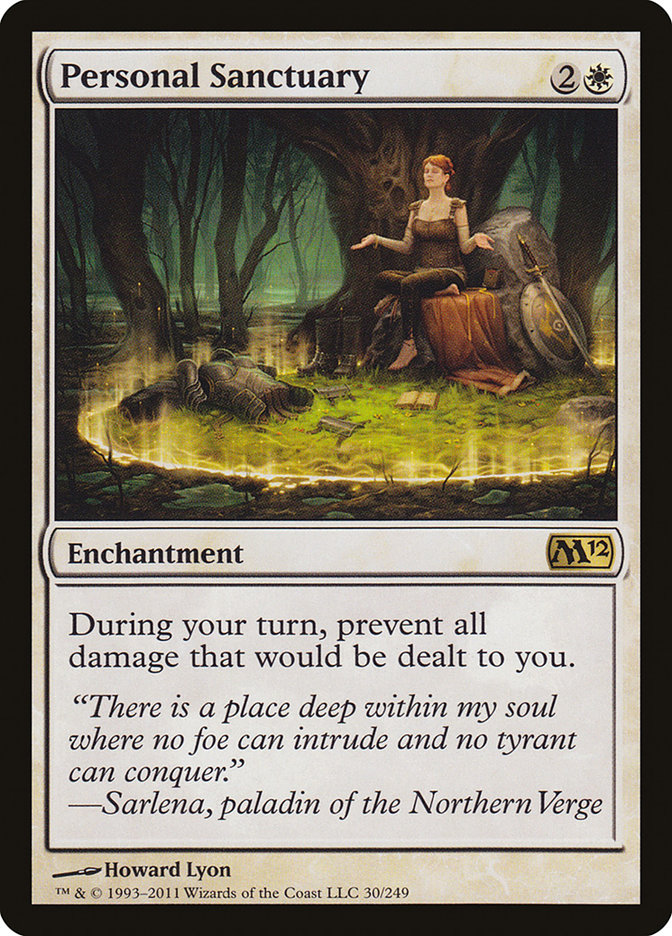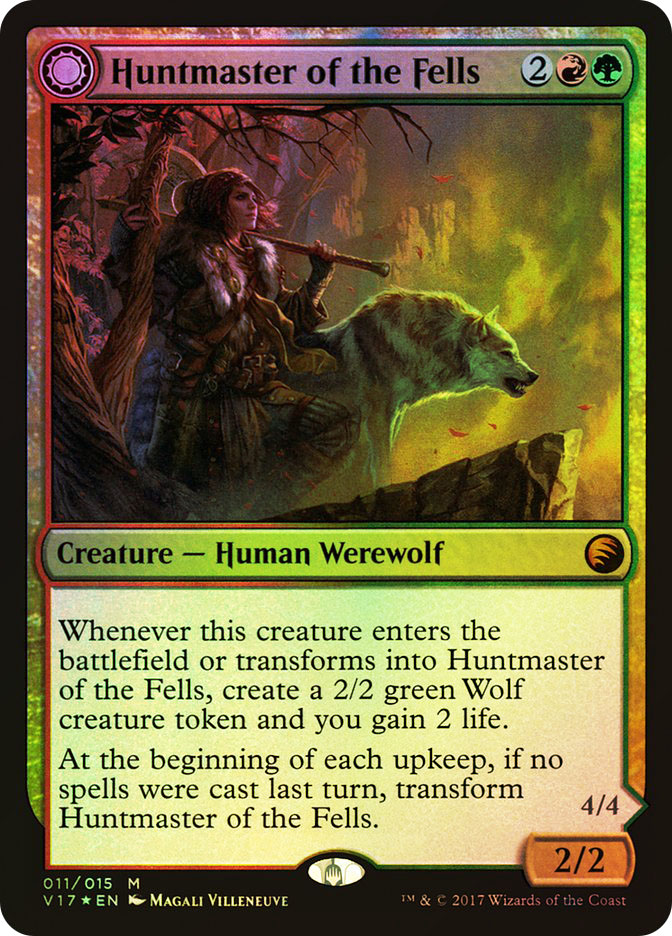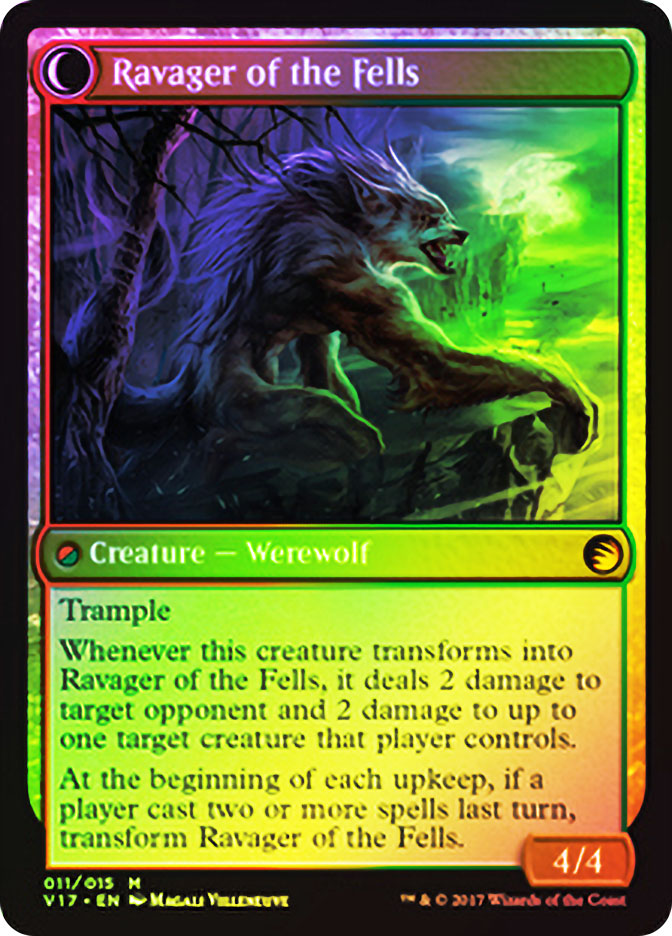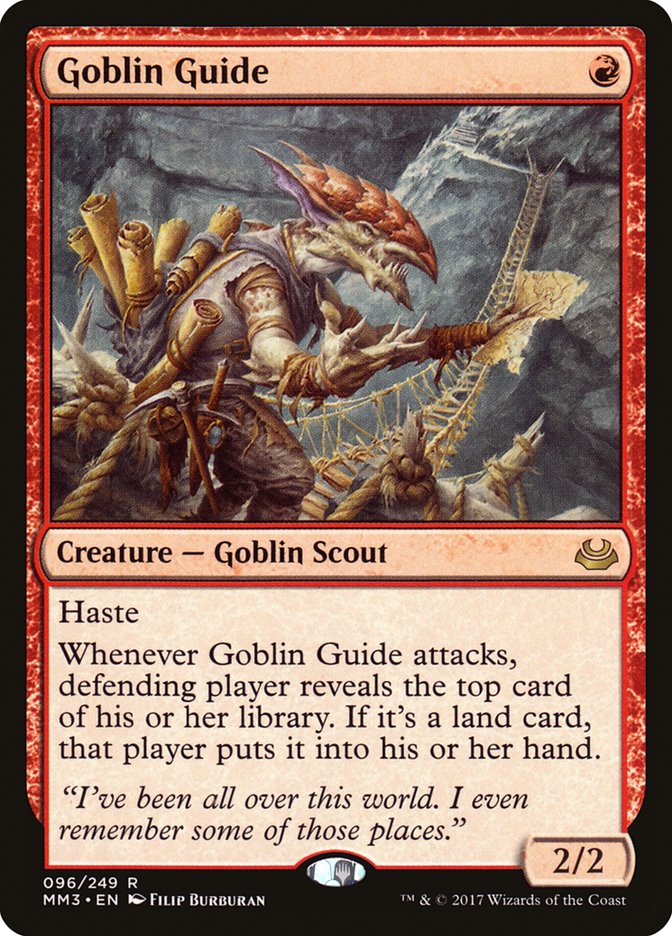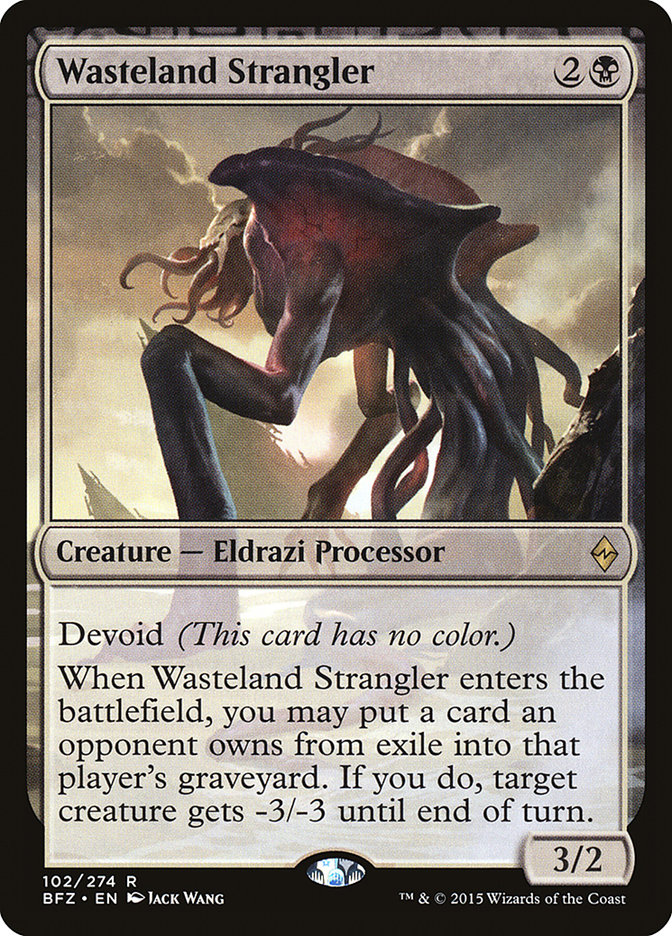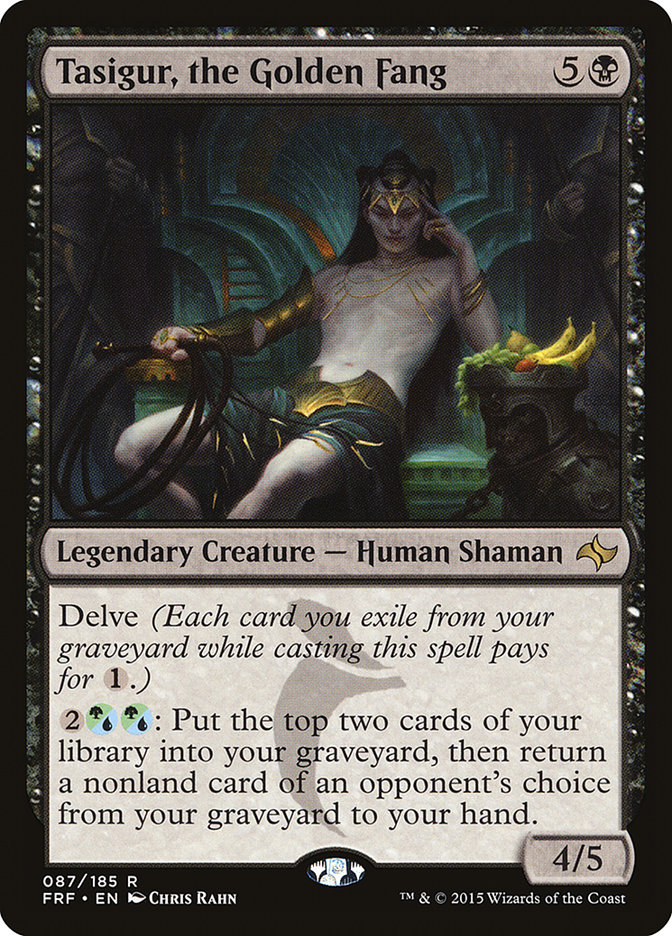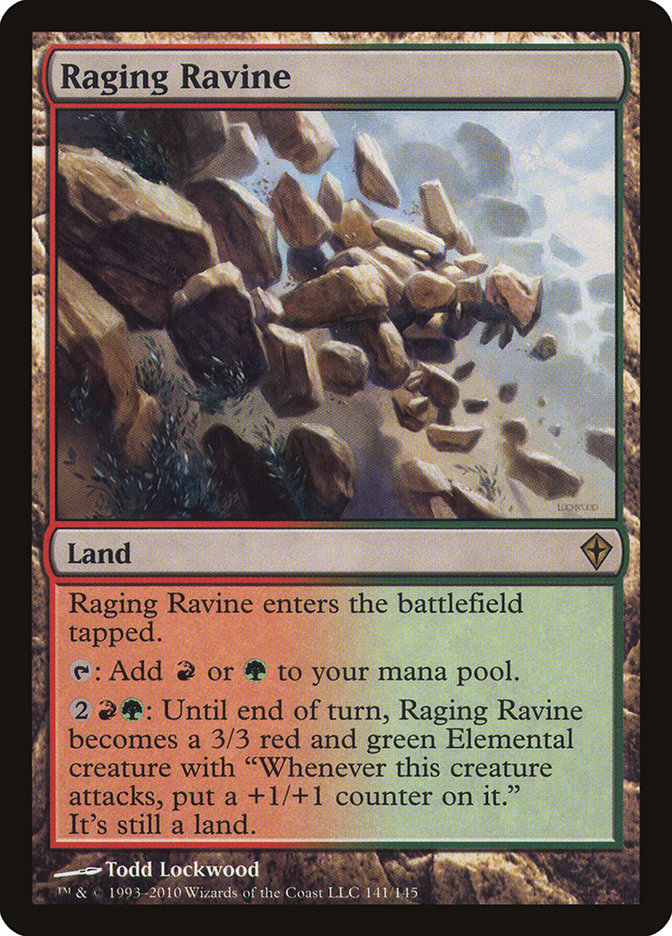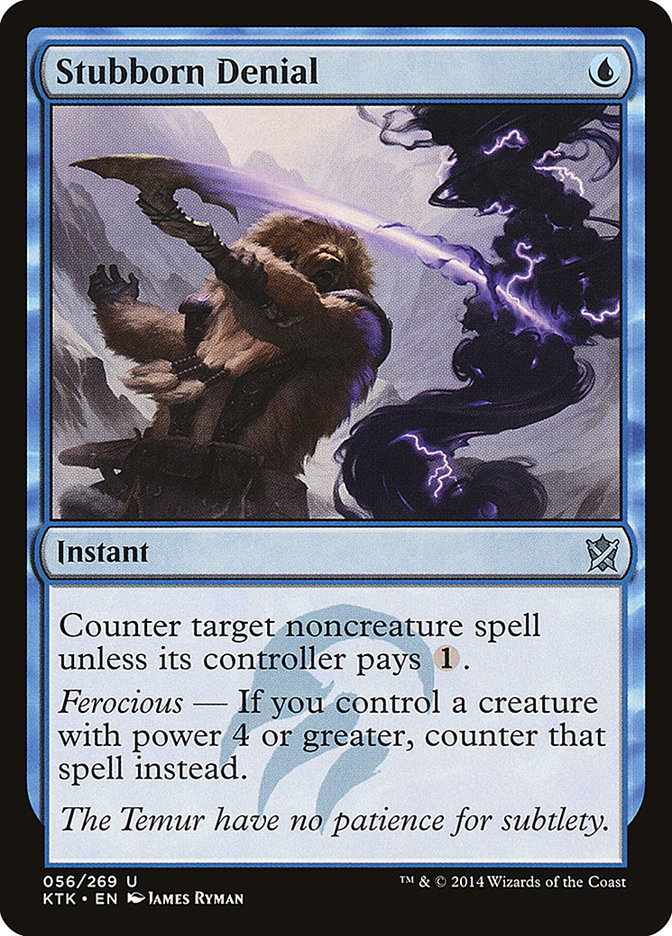Welcome to 2018, everyone.
I don’t typically go for time-of-year themed content, but I’m about to make
an exception. New Years is my favorite holiday. The celebration of new
beginnings is really meaningful to me. Despite that, I’m not much of one
for resolutions or anything like that. Instead, I just approach every new
year with a renewed sense of optimism. Life’s a great and crazy thing where
anything can happen, and the new year always brings that to the forefront
of my thoughts.
For me, the dawning of a new year is a time to remind myself that things
can go right and to start setting myself up for that potential success.
When an opportunity comes my way, I want to be in a position to take
advantage of it. Interestingly, this is a lesson I first learned from
Magic.
We’ve all been there. Facing down a massive battlefield and a near-lethal
attack, you decline to Lightning Bolt something to save an inconsequential
amount of damage because you know your only way out of this situation is
the Supreme Verdict you hope is on the top of your deck, and you want to
still have the Lightning Bolt should your miracle happen. It’s called
playing to your outs, and it’s one of the first thing players learn to do
as they begin their competitive Magic journey.
But things don’t have to be so dire to start thinking about the future.
It’s easy to just exist in the moment when things are okay, in both Magic
and life. When the situation seems exactly fine, it’s the most natural
thing in the world to just do the best you can with the cards in your hand
and see what happens. To just keep doing your day-to-day routine without
thinking about tomorrow, satisfied but not content. It took me a long time
to get out of this present-tense only mode in Magic, and a longer time in
life.
Thinking about the next draw step or the next day is what can take your
situation from fine to great. I’ve incorporated the philosophies behind a
few Magic strategy concepts into my life over the years, but this is by far
the most important one. In Magic, the core of the idea is this: always be
thinking about how to make the card waiting for you on the top of your deck
better. When we decline to Lightning Bolt one of our opponent’s multitude
of attackers, we are making the Supreme Verdict on the top of our deck
better by letting it kill one more creature, which translates into us being
in a position that is better by exactly one Lightning Bolt in hand.
Improving the top of your deck can take many forms, and in less stressful
positions the effects are generally less obvious and can be hard to notice.
Noticeable or not though, they matter and can really add up in game. Let’s
look at some of the ways we can maximize the impact of the cards on the top
of our deck.
Mana Efficiency and Double-Spelling
Mana efficiency is a concept we all know and love. Other things equal, you
should use as much mana as you can every turn. This idea is fundamental to
competitive Magic and influences every aspect of the game from deckbuilding
to in-game decisions. What we don’t talk about very often is that a lot of
the point of mana efficiency is to set our draw steps up for success.
Think about this example. You’re playing Jund, and your hand right now is
Liliana of the Veil, Huntmaster of the Fells, and plenty of lands. You just
made your fourth land drop onto an empty battlefield, and now have to
choose between playing Huntmaster or Liliana.
The correct play from a mana efficiency perspective is to play the
Huntmaster. But how much do we care about mana efficiency right now? Our
only other way to use our mana is Liliana, so shouldn’t we look to
principles other than mana efficiency to determine our play?
The answer to that question is, of course, no. It’s true that in the very
late game when you have a mess of lands on the battlefield and can
basically cast your spells whenever you want, mana efficiency becomes a
less relevant concern. But that point occurs much later and less often than
you might think.
You see, mana efficiency is about maximizing our ability to use all of our options, not just the ones we have access to right now.
Imagine that the turn after playing the Liliana, you draw a Tarmogoyf. Now
you have to choose between casting the Huntmaster of the Fells or the
Tarmogoyf, and the Tarmogoyf draw is fairly anemic. It’ll probably be of
value eventually, but it’s not actively helping you right now.
But if you had cast the Huntmaster on turn 4 over the Liliana, drawing the
Tarmogoyf on turn 5 is excellent. Now you can cast both your
Liliana and your Tarmogoyf this turn and get a nice double spell tempo
boost on your opponent. This Tarmogoyf is now much better than it was
before, and it’s because we set ourselves up for such a draw to be good.
You didn’t know you were going to draw the Tarmogoyf. But you did know you
could, as you knew you wrote four copies of Tarmogoyf down on the deck
registration sheet. If you cast the Liliana first, the only way you’d be
able to double spell is if you drew a Thoughtseize or some other one-drop.
But by casting the Huntmaster first, you get to double spell with two drops
as well, increasing your odds to do so dramatically.
But we can go deeper into future mana efficiency. You’re playing Jund again
and it’s currently your third turn. You have Tarmogoyf, Fatal Push, and
Liliana of the Veil in hand, as well as some lands. You are apparently
playing a mirror match, as your opponent’s battlefield is Dark Confidant.
Essentially, your two choices here are to either play Tarmogoyf and Fatal
Push the Confidant, or to deploy Liliana and use her minus two ability to
deal with the Dark Confidant. Which do you like?
Both plays use all our mana, so they’re equally mana efficient, right?
Not quite.
Think ahead, to the cards we could draw on our next turn. Imagine that we
draw our own Dark Confidant. If we went with casting Tarmogoyf and the
Push, this turn we are faced with the choice of deploying the newly drawn
Dark Confidant or that Liliana of the Veil, but not both since this is only
turn 4. But if we had cast the Liliana, we’d be able to use all four of our
mana and deploy both the Confidant and the Tarmogoyf. Drawing that
Confidant sure looks a lot better this way, huh?
At its heart, this is an issue of chunking. We had the choice between
casting one spell that costs three or two spells that add up to three. By
choosing the option with the big piece rather than the one with the two
small pieces, we maximize our ability to use all our mana on future turns.
Smaller pieces are much easier to fit into our curve and give us
substantially more options going forward.
If you want a rule, here it is: other things equal, you should choose the
mana efficient line that includes playing the card with the highest CMC
among available options. Doing so maximizes the chances that the cards on
the top of your deck get to be played in a mana efficient fashion, which
will let them shine like the stars they are.
Give Your Cards What They Want
Putting yourself into situations where more of your potential draw steps
fit nicely into your curve is one way to get the most out of them, but we
can do more. But first, we have to understand what our cards want.
Some cards are relatively simple. Goblin Guide doesn’t want a lot. A single
red mana, a clear path to the opponent’s life total, and no pesky removal
spells on the way is about all a Goblin Guide wants out of life. Setting
Goblin Guide up for success is as easy as Searing Blazing their blocker
instead of their attacker, just in case.
Other cards are a lot more demanding. Liliana wants a few things, and none
of them are simple. She wants to grace the battlefield with her presence
either when the enemy has exactly one creature so she can show her minus
two off to best effect, or when she’s under no immediate danger and you
have a card you don’t mind getting rid of. Arranging these things for her
can be complicated, but not impossible.
When playing a Liliana of the Veil deck, you should always be thinking
about ways to get rid of their insignificant creatures to clear the way for
that minus two. If a non-Liliana deck offers you a trade of Lingering Souls
tokens, snap it off. Your future Liliana will thank you for it. When you
can’t simply empty your hand, make sure you hold something you would be
okay with discarding. Sometimes you’ll have a removal spell with no target
you’d like to hold onto for as long as possible, so you sandbag a land in
case you draw a Liliana before they draw a removal target. Stuff like that.
Every card wants different things, but if you’ve played a deck for a while
it’s easy to understand what situations your cards really shine in. Before
playing in a tournament, I’ll often go through my decklist card by card and
think about the best situations for each of them. This keeps those
scenarios fresh in my mind while playing, and helps me maneuver into them.
I can’t talk about every card, but I can talk about some of the common
themes in card desires.
Some cards just want something to kill. When playing with cards like these
in your deck, it can often be advantageous to leave your opponent with a
target for these effects. If your opponent’s only creature is a Rogue
Refiner and your life total’s looking okay, consider taking a couple hits
before you Magma Spray it, just in case you draw that Glorybringer. If
you’re playing the Eldrazi Taxes deck, decline trading with creatures that
you’ll just be able to use Wasteland Strangler on if you draw it.
Other cards just want the graveyard to be a certain way. Often, these cards
will want you to take early trades so that they can be at their best.
Trading your Fatal Push for their creature might be the difference between
casting the Tasigur, the Golden Fang you draw on turn 3 and not.
Thoughtseizing their Wurmcoil Engine instead of their All is Dust could be
the reason that the Tarmogoyf you draw next turn is able to kill them
before they assemble Urzatron. Because you traded Gurmag Anglers with your
B/R Hollow One opponent, this freshly drawn Kolaghan’s Command has a second
good mode.
A lot of cards are happiest when you have plenty of mana. I count reactive
cards in this category, as you don’t want to be leaving mana up for them
turn after turn to stunt your development. Often in games, you have more
control over your land count than you might think. You can scry them to the
top, either after mulliganing or with a Serum Visions. You can choose to
not use them as discard fodder for Liliana of the Veil or Kolaghan’s
Command.
Finally, some cards have the ability to just kill the opponent, and are
happiest when they get to do so. That might not be their primary function
in your deck, but their ability to go to the face is an important thing
that you shouldn’t forget about. Opportunities to get your opponent into
their lethal range for little cost should be taken. When times are dire,
often you should take such opportunities even if the cost is high.
Understand that maneuvering into situations where the cards left in your
deck are good is not your first priority in a game of Magic, and probably
not your second. The cards you already have come first. The thing is,
though, doing these things is often free or nearly free. But if you’re not
actively thinking about ways to have better draw steps you won’t notice
these opportunities as they arise, no matter how free they might be.
Every draw step is an opportunity waiting to be seized.
Will you be ready?


